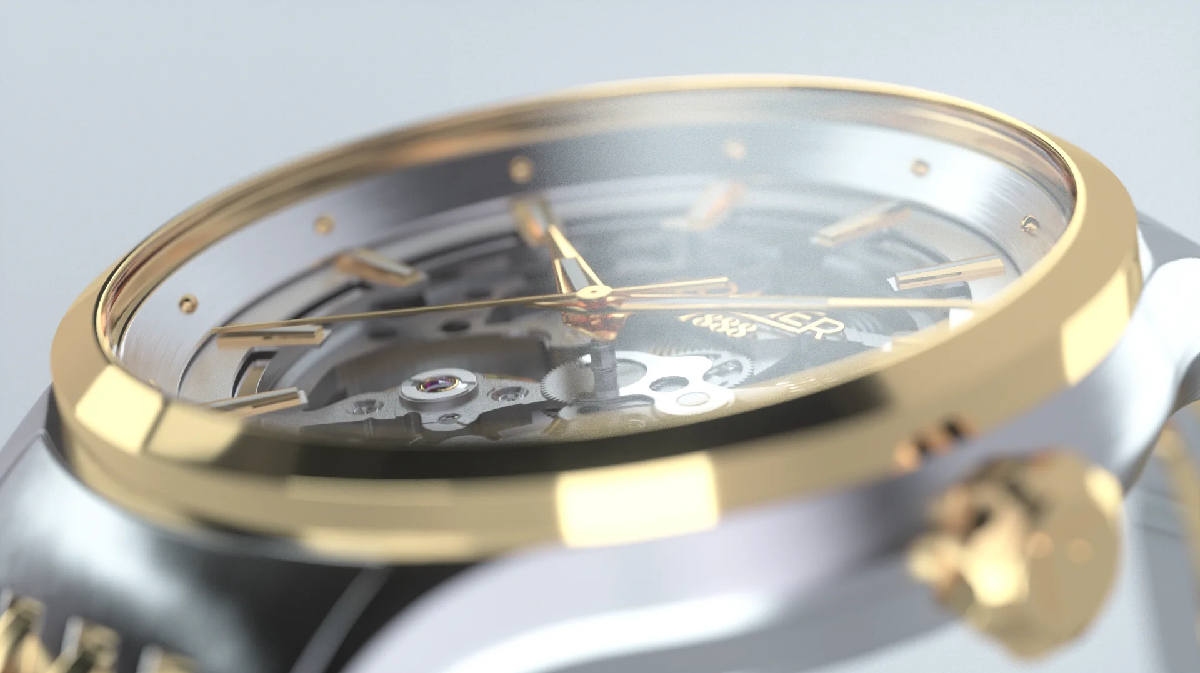Watches have come a long way from their inception as mere timekeeping devices. They are now considered fashion statements, status symbols, and even collectibles. One of the most important aspects of a watch is the material it’s made of. With advancements in technology and innovative approaches to design, watch materials have evolved over the years. In this article, we will explore some of the latest innovations in watch materials, including titanium, ceramic, carbon fiber, and wood.
Titanium Watches
Titanium is a lightweight and durable metal that has become a popular material for watches. It has a high strength-to-weight ratio and is resistant to corrosion, making it an ideal choice for sports watches and diving watches.
One of the advantages of using titanium in watches is its hypoallergenic properties. This means that it’s less likely to cause skin irritation, making it a popular choice for people with sensitive skin. Titanium watches are also known for their resistance to scratches and wear and tear.
Some of the most popular titanium watches in the market include the TagHeuer Aquaracer X Bamford, the Tissot T-touch Connect Solar, and the Omega Speedmaster X-33.
When it comes to caring for a titanium watch, it’s important to avoid exposing it to extreme temperatures and harsh chemicals. A soft cloth can be used to clean the watch and remove any dirt or smudges.
Ceramic Watches
Ceramic is a high-tech material that has become increasingly popular in watchmaking. It is a hard, scratch-resistant material that is also lightweight and hypoallergenic. Ceramic watches are often used in high-end luxury watches and are known for their durability and resistance to wear and tear.
One of the advantages of ceramic watches is their ability to retain their appearance over time. Unlike other materials that may fade or tarnish, ceramic watches are known for their long-lasting finish. They are also resistant to scratches, making them a popular choice for daily wear.
Some of the most popular ceramic watches in the market include the Chanel J12, the Rado True Thinline, and the Tag Heuer Formula 1.
Caring for a ceramic watch requires regular cleaning to remove any dirt or smudges. While ceramic is a durable material, it’s not completely immune to damage from impacts. Avoid dropping your watch or hitting it against hard surfaces. Even a small impact can cause scratches or cracks in the ceramic.
Carbon Fiber Watches
Carbon fiber is better known for its strength and durability. It’s often used in high-performance applications such as aerospace and motorsports. In recent years, carbon fiber has also become popular in watchmaking due to its lightweight and distinctive appearance.
One of the advantages of carbon fiber watches is their unique appearance. The distinctive weave pattern of carbon fiber creates a bold and sporty look that is popular among watch enthusiasts. Carbon fiber is also lightweight and resistant to scratches, making it a popular choice for sports watches.
Some of the most popular carbon fiber watches in the market include the Breitling Endurance Pro, Richard Mille RM 11-03 Automatic Flyback Chronograph and Hublot Big Bang Unico Carbon.
Wooden Watches
Wooden watches have become increasingly popular in recent years, as they offer a unique and eco-friendly alternative to traditional watch materials. Wooden watches are made from sustainable materials such as bamboo, sandalwood, and maple. These are lightweight and lovely to wear and enjoy the feel of wood, making them a popular choice for everyday wear.
One of the advantages of wooden watches is their unique appearance. Each piece of wood has a distinctive grain pattern, making each watch one-of-a-kind. Wooden watches are also biodegradable and environmentally friendly, making them a popular choice for people who want to reduce their carbon footprint.
Some of the most popular wooden watches in the market include the Jord Frankie, the WeWood Date, and the Tense Wooden Watch.
When it comes to caring for a wooden watch, it’s important to avoid exposing it to water or extreme temperatures. Over time, the wood on your watch may become dry or dull. To restore its natural shine, apply a small amount of wood oil to the watch and rub it in gently with a soft cloth. This will help protect the wood from drying out and prevent cracking.
Plastic Watches
Plastic watches have been around since the 1970s, and they have undergone significant advancements in terms of design and technology. Today, plastic watches are popular among children and adults alike due to their affordability and durability.
One of the advantages of plastic watches is their affordability. They are often sold at a fraction of the price of other materials, making them a popular choice for people who want a stylish watch without breaking the bank. Plastic watches are also lightweight and durable, making them a popular choice for outdoor activities.
Some of the most popular plastic watches in the market include the Casio G-Shock, the Swatch Originals, and the Timex Weekender.
Gold Watches
Gold watches have been a symbol of luxury and status for centuries. They are often encrusted with diamonds and other precious stones, making them a popular choice among the wealthy and elite.
One of the advantages of gold watches is their value as a status symbol. They are often passed down as heirlooms and are considered valuable investments. Gold watches are also durable and resistant to corrosion, making them a popular choice for everyday wear.
Some of the most popular gold watches in the market include the Rolex Day-Date, the Cartier Tank, and the Patek Philippe Nautilus.
Gold is a soft metal that can be easily damaged by chemicals, such as perfume, hairspray, and cleaning products. To prevent your watch from becoming discolored or damaged, avoid exposing it to these substances. Gold watches are also prone to scratching, avoid wearing gold watches while doing activities that could cause scratches, such as sports or heavy manual labor.
One should know whether his gold watch is water-resistant or not, and be sure to follow the manufacturer’s guidelines for water exposure. Avoid exposing the watch to water if it’s not rated for it, and have it resealed regularly to ensure its water resistance is maintained.
Future of Watch Materials
As technology continues to advance, there are exciting new possibilities for watch materials. Here are a few trends to look out for in the coming years.
Upcoming trends in watch materials
One trend we’re seeing is the use of new materials such as graphene, a thin layer of carbon that is stronger than steel and incredibly lightweight. We may also see the use of materials such as ceramics, which are highly scratch-resistant and durable.
Another trend is the use of composite materials, which combine different materials to create unique properties. For example, combining carbon fiber with a polymer can create a material that is both lightweight and incredibly strong.
Impact of technology on watch materials
Advances in technology are also enabling new possibilities for watch materials. For example, 3D printing allows for greater precision and customization in watch design, while nanotechnology allows for the creation of materials with unique properties.
Possibilities for sustainable and eco-friendly watch materials
Sustainability is becoming an increasingly important consideration in the watch industry, and we’re seeing a growing interest in eco-friendly materials such as recycled plastic and bio-based materials. We may also see the use of materials such as algae, which can be sustainably sourced and has the potential to create a range of unique colors and textures.
In conclusion, choosing the right watch material is an important consideration for both practical and aesthetic reasons. The right material can offer durability, comfort, and a unique look that reflects your personal style. As technology continues to advance, we’re seeing exciting new possibilities for watch materials, from graphene to sustainable materials. Whether you prefer classic leather or cutting-edge materials, there’s a watch material out there for everyone.























